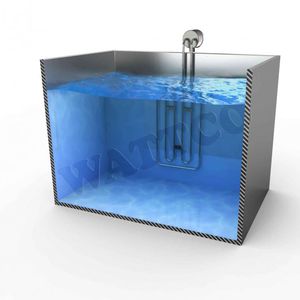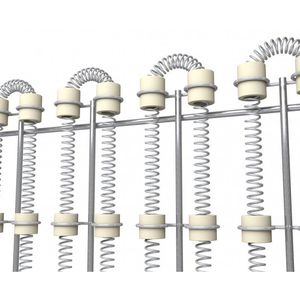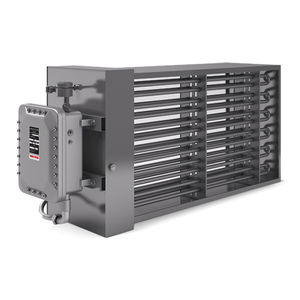
- Company
- Products
- Catalogs
- News & Trends
- Exhibitions
Tube heater for liquidsfor tarelectric







Add to favorites
Compare this product
Characteristics
- Treated product
- for liquids, tube, for tar
- Other characteristics
- for tank, electric
- Power
Max.: 80 kW
(109 hp)Min.: 4 kW
(5 hp)- Temperature
Max.: 750 °C
(1,382 °F)Min.: 0 °C
(32 °F)
Description
WATTCO™ Pipe Heaters are especially constructed to fit inside standard 2 or 3” schedule 40 NPS pipes. These industrial tank heaters are specifically designed for usage in tanks that require extremely low watt densities such as waxes, thick liquids such as tar, molasses and corrosive mediums. Wattco pipe heaters do not come in contact with the liquid medium. Rather the indirect heating from element to pipe is used to heat liquid sources. This provides easy maintenance, as the tank does not need to be emptied out if the industrial heater needs to be replaced.
Designed to withstand high heat environments, Wattco pipe heaters are an excellent choice to use with heavy bunker fuel oils, corrosive liquids and liquids with high viscosity. Wattco pipe tank heaters can use flange heaters, screw plug heaters as well as resistance coil heaters (open coil heaters).
Pipe heaters use supportive ceramics resistant to high thermal heat that provide mechanical support to coils. Thermocouples can also be used to relay temperature readings to a digital controller that helps regulate the heat intensity. Steel pipes can be used for their thermal transfer properties and their corrosion resistant properties to many petrochemical solutions. Open coils are the most efficient type of electric heating while at the same time being the most economically feasible for most industrial heating applications.
VIDEO
Catalogs
No catalogs are available for this product.
See all of WATTCO‘s catalogsRelated Searches
- Resistance heater
- WATTCO heater
- Gas heater
- Air heater
- WATTCO electric heater
- WATTCO liquid heater
- Immersion heater
- Cartridge heater
- Tubular resistance heater
- Convection heater
- Circulation heater
- Stainless steel heater
- Band heater
- Duct heater
- Flat resistance heater
- Flexible resistance heater
- Industrial resistance heater
- Stainless steel resistance heater
- Electric band heater
- Preheater
*Prices are pre-tax. They exclude delivery charges and customs duties and do not include additional charges for installation or activation options. Prices are indicative only and may vary by country, with changes to the cost of raw materials and exchange rates.


























